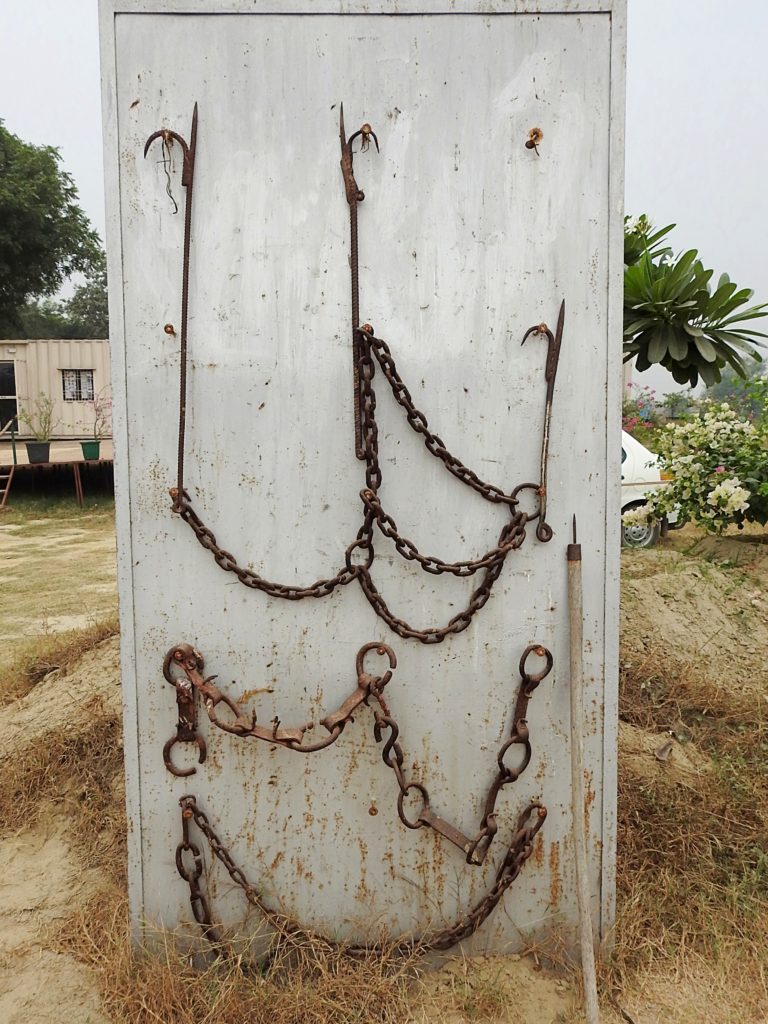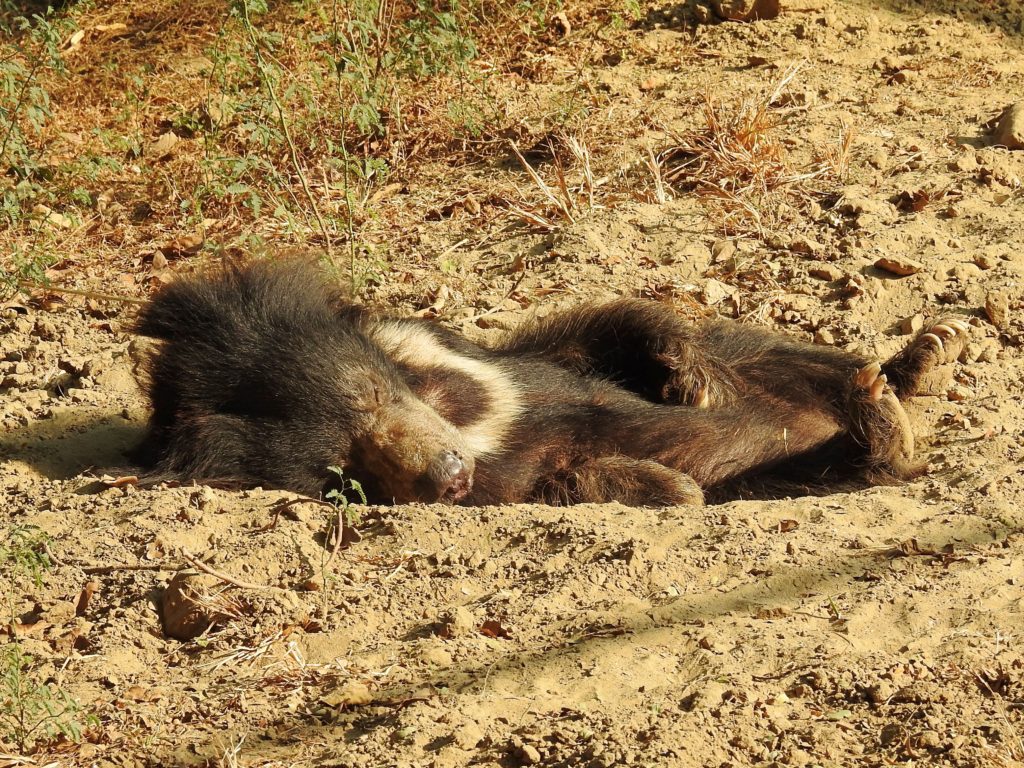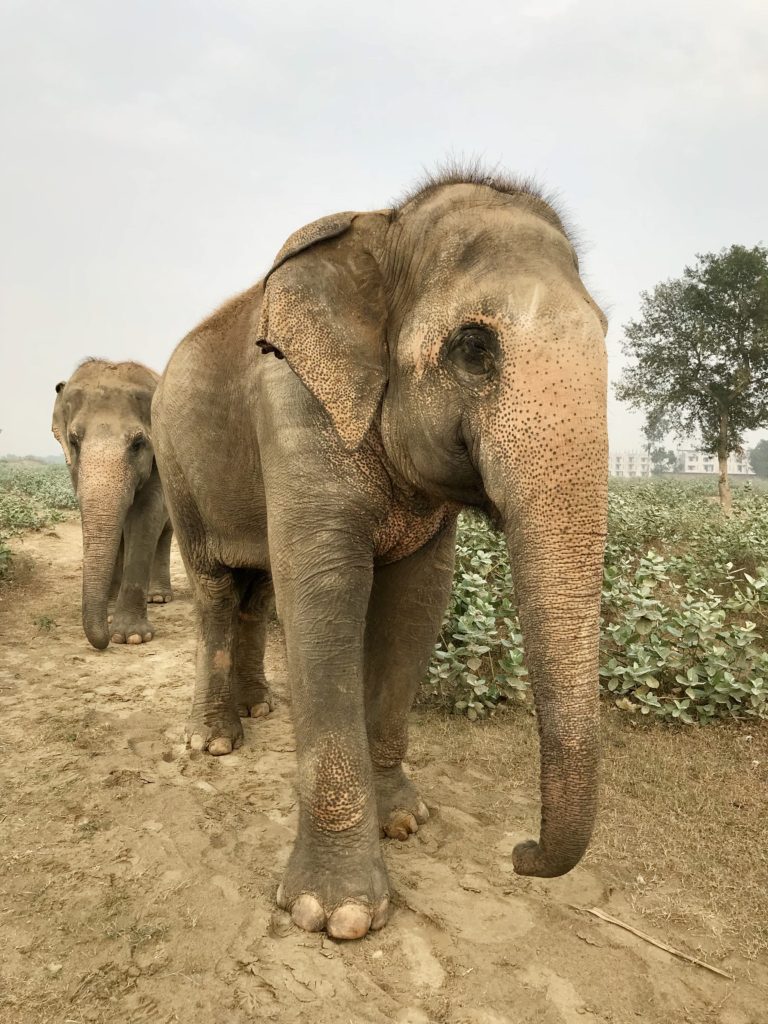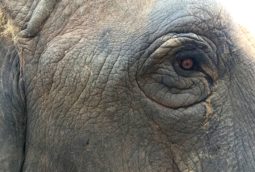Think back to the last time you had a paper cut. Painful, right?! Or got punched in the face by a bully. Now imagine a lifetime of such pain and abuse – relentless, day in day out, and a million times worse. That is the life of a captive elephant.
So while that elephant ride may seem innocuous, the reality behind how the elephant got there, is anything but.
Taken from the wild at a very young age, tortured into submission by a horrendous ‘breaking of the spirit’ process (which involves beatings, starvation, confinement and other forms of subjugation), and then for decades – chained, forced to work, poked and prodded with sharp hooks, blinded even sometimes. The elephants suffer grievous injuries on their spines from carrying people, on their legs from being constantly chained, on their feet from walking on hard terrain (like concrete / tarred roads), not to forget the emotional and mental trauma. These magnificent creatures have no escape till the day they drop dead.
The Asian Elephant is listed as ‘Endangered’ by IUCN. Yet an estimated 16,000 elephants are in captivity across 11 Asian countries; of which about 3,500 are in India alone. (The Indian Elephant is a sub-species of the Asian Elephant.)
I recently visited Wildlife SOS (WSOS), an absolutely remarkable non-profit in India that rescues and rehabilitates captive elephants. I had met the WSOS founders, Kartick Satyanarayan and Geeta Seshamani, way back in 2014, and was in awe of the fact that they had rescued every single ‘dancing bear’ (over 620 in all) from the streets of India. In this 400-year old barbaric practice, sloth bear cubs were snatched from the wild and their muzzles pierced with a hot metal rod (without anesthesia), to insert the control rope, and their wounds were not allowed to heal. When the handler tugged the control rope, it would cause an insane amount of pain to the bear, making it writhe in pain, which was seen as ‘dancing’. In addition to rescuing the bears, WSOS also rehabilitated the owners of the bears – a nomadic community known as kalandars. They were provided with monetary support, alternative skills training, as well as education for their children, in exchange for a written promise that they would not indulge in the trade again. This holistic approach, along with the herculean efforts involved, lead to the surrender of the last ‘dancing bear’ in 2009 and the practice was completely eliminated in India.
The rescued bears are housed and cared for in 4 different centres across India, the largest one being in Agra. So whenever you plan to visit the Taj Mahal, I highly recommend that you add the WSOS Agra Bear Rescue Facility (ABRF) to your itinerary. I could spend forever watching the antics of those adorable bears!
Back to elephants! During my visit to the WSOS Elephant Care and Conservation Centre (ECCC) in Mathura, not too far from Delhi/Agra, I got to spend time with the rescued elephants housed there. The elephants are extremely well looked after, and what is truly commendable are the efforts made by the WSOS team to understand the personality and likes-dislikes of each elephant, in order to make them as comfortable as possible.
I loved every second of my time at the ECCC – the walks with the elephants, the feeding sessions, watching them play with their enrichment toys and how they interacted in their small groups. This experience was (once again!) a reminder of the fact these animals possess an incredible intelligence, that we as humans need to learn to respect.
These elephants still bear the scars (both physical and mental) of their decades in captivity but now thanks to WSOS, they will live out their lives being free, and just being elephants!
Tourist demand for riding elephants is a major contributing factor to elephant captivity. There’s a lot we can do to change the situation:
- Don’t support elephant captivity in any form – don’t ride them anywhere or watch them in a circus or feed a begging elephant. The same holds true for all other wild animals as well.
- Create awareness: Use every opportunity on social media (or any other form of media) to speak up for elephants and other captive animals
- Volunteer: Organizations like WSOS welcome volunteers. If you love working with animals, especially elephants, this is an experience you will never forget! At WSOS, you can also divide your time between the ECCC and ABRF. Read more here http://wildlifesos.org/volunteer-with-us/
- Donate: There are so many ways you can financially support organizations like WSOS. Organize a bake sale to fund raise or buy their merchandize (https://www.armtheanimals.com/collections/wildlife-sos-collection) or pick something else that works for you from these options (http://wildlifesos.org/donate-2-2/) Every little bit counts!
Elephants belong in the wild and need to remain there!
If you’ve visited an organization that rescues captive elephants (or any captive wildlife for that matter), please leave me a comment with your experience. I would love to visit them someday
South African conservationist Lawrence Anthony (1950-2012) in his book ‘The Elephant Whisperer’ said
“…..until we allow not only elephants, but all living creatures their place in the sun, we can never be whole ourselves.”
Amen to that!









This is wonderful, Anne. Your words are tops with helping the reader to understand how a captive elephant feels…
I took my daughter for an “elephant day” in the Chitwan region of Nepal in June of 2018… we did ride an elephant through the jungle there… and the man driving the elephant used a bamboo stick to bop him on the head. I didn’t know it was a controversial subject… I soon learned that it was! We processed how we felt about this sweet elephant who took us on a glorious tour of the jungles down there and googled the topic after we got back to Kathmandu. Oh, there is so much to see and write about in this field, isn’t there ?
Back to our elephant day: We were able to hang out with the man and his elephant for several hours… and found that this guide was actually extremely loving. He let us walk down to the river with him and they bathed together playfully. This elephant seemed to be his life ! His only way to make money.
I would love to go back and study this topic ( and others !) soon.